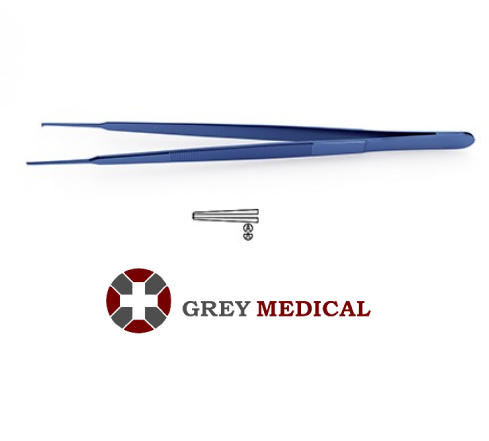In the world of surgery, precision is not just a goal; it's a necessity. Every movement, every grip, and every tool plays a critical role in the outcome of a procedure. Among the array of instruments available to surgeons, certain tools stand out for their specialized design and indispensable function. One such instrument is the Gerald forceps with teeth a tool engineered for delicate yet secure tissue handling.
Understanding the specific applications and design features of these forceps is crucial for surgical teams dedicated to excellence. This guide explores the unique characteristics of Gerald forceps, their role in various surgical disciplines, and why their design is a testament to the innovation driving modern medical technology.
The Anatomy of Precision: Design and Function
At first glance, Gerald forceps might seem similar to other surgical forceps. However, their distinct design sets them apart. They typically feature long, slender shanks and very fine tips, allowing surgeons to work in deep or confined surgical fields with minimal obstruction. The addition of teeth to the tips provides a significant advantage in specific scenarios.
The primary function of these forceps is to grasp and manipulate delicate tissues, such as blood vessels or fine membranes. While smooth or atraumatic forceps are suitable for extremely fragile tissues to prevent damage, the Gerald forceps with teeth offer a more secure grip. The fine, interlocking teeth ensure that tissue does not slip, which is vital during complex procedures like vascular anastomosis or delicate dissections where stability is paramount.
Applications Across Surgical Specialties
The versatility of Gerald forceps with teeth makes them a valuable asset in numerous surgical fields. Their design is particularly beneficial where a combination of delicate handling and a firm grip is required.
Cardiovascular and Vascular Surgery
In cardiovascular and vascular surgery, these forceps are indispensable. Surgeons use them to handle blood vessels, grafts, and sutures with exceptional control. When performing an anastomosis—the surgical connection between two vessels—a secure grip on the vessel edges is essential for precise suture placement. The fine teeth provide this security without causing excessive trauma that could compromise the integrity of the vessel wall.
Neurosurgery and Microsurgery
Neurosurgery and other microsurgical procedures operate on an incredibly small scale. Manipulating delicate neural tissues, membranes, or tiny blood vessels requires instruments that offer both finesse and a reliable hold. The slender profile of the Gerald forceps with teeth allows for excellent visibility under a microscope, while the toothed tips ensure that fragile structures are held steady for dissection or repair.
Plastic and Reconstructive Surgery
In plastic and reconstructive surgery, aesthetics and function go hand in hand. Handling skin flaps, grafts, and other delicate tissues requires precision to ensure optimal healing and minimal scarring. These forceps allow surgeons to manipulate tissues securely, facilitating intricate suturing and tissue alignment, which is fundamental to achieving successful reconstructive outcomes.
The GreyMedical® Standard of Excellence
For surgical instruments, quality is non-negotiable. The materials, craftsmanship, and ergonomic design all contribute to an instrument's performance in the operating room. Companies like GreyMedical® embody a commitment to innovation and excellence, ensuring that every instrument meets the highest standards of the medical profession.
A well-crafted pair of Gerald forceps with teeth is made from high-grade stainless steel, providing durability and resistance to corrosion. The manufacturing process ensures that the tips align perfectly and the teeth interlock flawlessly. This attention to detail results in an instrument that feels like a natural extension of the surgeon's hands, enabling them to perform with confidence and precision.
Conclusion: An Essential Tool for Delicate Procedures
The Gerald forceps with teeth represent a perfect balance of delicate design and functional strength. Their ability to provide a secure grip on fine tissues makes them an essential tool in specialties ranging from vascular surgery to neurosurgery. For surgical teams and healthcare facilities committed to providing the highest level of care, having access to impeccably crafted instruments is fundamental. This specialized tool is a clear example of how thoughtful design and engineering contribute directly to successful surgical outcomes and patient safety.





Comments